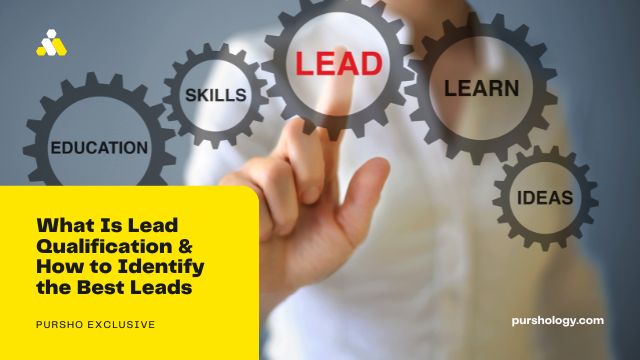1. Introduction:
Lead qualification is the process of determining which prospects are most likely to generate revenue. It is a crucial step in the sales pipeline and is an important part of any sales funnel. A lead qualification score is specified by the sales rep and helps the sales rep prioritize leads that have a higher chance of generating revenue. This score can be used to prioritize leads based on such factors as the prospect’s usage history and other factors.
The lead qualification score takes into account a number of different things, including:
• Usage History – What does this prospect do with your product? Are they using your product regularly?
• Product Usage – What products is this person using?
• Features – Which features do they need?
• Price – How much are they spending per month, per year, or per lifetime?
• User-Experience – How does this person interact with your product? Are they frequently engaging with it? Are they interacting with it as a consumer or end-user in an enterprise environment? How do they use it in their application (e.g., team collaboration tools)?
• Cost – Is this person paying for the product right now or down the road? If there are no payments, how long will it take them to pay you back? If there is ongoing maintenance and support, what percentage of users will be required to pay you back at some point in time over their lifetimes (e.g., 5% are billed monthly)?
The lead qualification score also takes into account other factors that may vary from company to company or from a marketing agency to marketing agency:
• Product Space/Marketplace (i.e., how well differentiated is the market)
• Sales Cycle (from proposal to close)
• Market Growth Rate (from year-to-date data)
Let’s walk through some key assumptions about these factors for each category:
1) Usage History: The number of people who use your product should be captured at every stage throughout your sale cycle, not just during the signup as a means of gathering data on usage trends. As such, we recommend collecting usage data at each stage throughout your sale cycle rather than immediately after signup — that way you can capture ongoing usage trends across all users and not just during signup.
2. What is lead qualification?
Lead qualification is the process of prioritizing results from qualified leads by assessing a lead’s potential to generate revenue. It’s a key part of the overall process of sales, but it’s not something that should be done on a case-by-case basis. In fact, lead qualification should be part of every sales process. You can apply lead qualification during any stage of your sales cycle — you just have to do it at all stages — and you can do so even if you aren’t following an automated process. Lead qualification is basically just a way to prioritize accounts for which your company can make money.
It’s also important to note that lead qualification should not be confused with lead scoring (which is something separate from lead qualification). Lead scoring is more like making sure all qualified leads are scored equally; they should never get sent back to the prospect database ourselves without being scored first (see: there is no “scoring” here — we are just taking the information we receive and providing it back). Lead Qualification, on the other hand, merely asks us to prioritize prospects based on their likelihood to generate revenue; score them accordingly; and then put them into different accounts.
3. How to identify the best leads
Lead qualification is an important topic. In the past, we’ve written about how lead qualification is essential to a great email marketing campaign. Today, we’ll be looking at how to do lead qualification and get it right.
Lead qualification is the process of determining which leads you should prioritize — and therefore where your marketing dollars should go — in order to increase profitability through revenue generation as well as user growth and retention. Lead qualification is obviously critical for long-term scalability, particularly if you have a true business model consisting of recurring revenue streams that depend on your ability to generate more leads than your competition. But in the short term, lead qualification helps you stabilize your sales pipeline and make sure that your most valuable leads are being prioritized as soon as possible instead of being ignored because they don’t meet minimums for ad exposure or a certain offer threshold (e.g., qualified leads that have already been responded to or who may respond within a certain time period).
Lead quality can be improved by doing the following:
• Establishing minimums for ad exposure or offer thresholds that you set based on previous experience (you can also use this information when deciding whether someone qualifies for a free trial)
• Setting up automated systems that give priority to qualified leads over non-qualified ones (e.g., A/B testing to see which one works better)
• Building or expanding your sales pipeline with more qualified leads (still going out to cold prospects? Better use automation!)
In addition, there are a few general rules of thumb on what makes for quality leads:
• If you can’t make the first sale after qualifying them, don’t keep them around too long!
• If you can’t make all qualifying sales within a set time period (e.g., two weeks), don’t keep them around too long!
• Don’t let people stay longer than 30 seconds if you save only 10% of their contact information!
These are just some examples of ways you can improve lead quality with little effort and cost:
4. Qualification criteria for scoring leads
Lead qualification is not an easy thing to do. The good news is that it has been done for a very long time and there are some very specific techniques that can help you do it right.
Here are the rules:
1. Only use qualified leads in the first place; if you don’t want to sell leads, then don’t use them.
2. Use at least two points of contact (high level, low level) in each lead that qualify. Ideally three points of contact (high level, low level), but this isn’t always possible on every account.
3. Don’t make the wrong decision based on the type of lead (e.g., high risk vs low risk).
4. Don’t buy leads just because they have a “lead qualification score” — this is about making smart decisions about which leads to buy based on their overall sales potential and what people are interested in using your product for, not whether they have a “lead qualification score” (remember: most people will try to qualify themselves).
5. Make sure you are using a good scoring algorithm; Google offers its own API for lead qualification scoring and it works well enough for many organizations but there are plenty of other scoring algorithms available too (e.g., LeadScore).
There are other fundamental rules as well, but these are the ones we tend to focus on more than others:
5. Distributing top prospects
In the old days, lead qualification was done on a very individual basis. You knew from experience which leads were worth pursuing, which ones were just great users of your product and which ones weren’t. But lead qualification tools have evolved to the point where we can now apply it to the entire sales pipeline.
This is a simple concept: you identify a set of criteria that will help you prioritise leads, and then distribute them accordingly. In this way, you can focus on the top prospects — who are most likely to generate revenues for you — while making sure none of them take too much time away from your main goals.
The reason lead qualification matters is that once you’ve identified people who are interested in your products or services, keep an eye on their behavior and ensure they remain engaged with your company. When that happens, you know there’s still value in pursuing those leads further.
As long as someone is actively using your product or service, and at least occasionally interacting with salespeople about it (even if they aren’t converting), there is plenty of room for growth in revenue streams. The only thing that matters is whether someone is willing to pay money for what we offer — not whether they are the right kind of person to buy our product or service (which depends more on price than quality).
But getting information like this into use takes some time, so it’s important to get started now by identifying top candidates as soon as possible and letting salespeople know about them before anyone else does (and then proceed gradually without negatively impacting engagement).
6. Conclusion
This is a very important topic, and one that I have been working on for a while. Prior to this post, I had no special interest in lead qualification, having previously just focused on source-based sales. But now I feel like my skills and tools are ready for it. And here’s why:
The traditional sales process has many problems:
• In the conventional process, we work with leads, then evaluate them based on their ability to drive revenue for us. This is great as long as you can sell more than you drive.
• In the conventional process, we work with leads, then add value to the lead by calling it “high quality” or “value-adding” or something like that. This is great when you can sell more than you drive (because we do).
• In the conventional process, we work with leads, then add additional value to the lead like making a partnership deal with them (or even persuading them of something not quite right). This is great when you can sell more than you drive (because we do).
• In the conventional process, we work with leads and figure out how much money they are worth based on their ability to bring in revenue for us. This is great if your total revenue is high enough to cover our cost of doing business (which is relatively cheap in this market). But it’s bad if your total revenue has dropped because of competition (so don’t expect big profits from us!).
Lead qualification involves working with leads and determining their value in addition to their ability to generate revenue for us. That means both evaluating them based on their ability to bring in revenue and also evaluating them based on how well they can solve problems for us from a sales perspective (see #1 above). It also means looking at other ways that our customers could benefit from our products — whether that be through new features or technical support — so that it becomes clear which ones are most likely to help solve business problems for us. However different these considerations may be from traditional approaches, they all share common ground:
• We need leads that are high quality — not just high volume but high quality.. The higher your volume needs (and the less likely you are getting top qualified prospects), the easier it will be to know what kind of warm bodies will fit into those needs.




